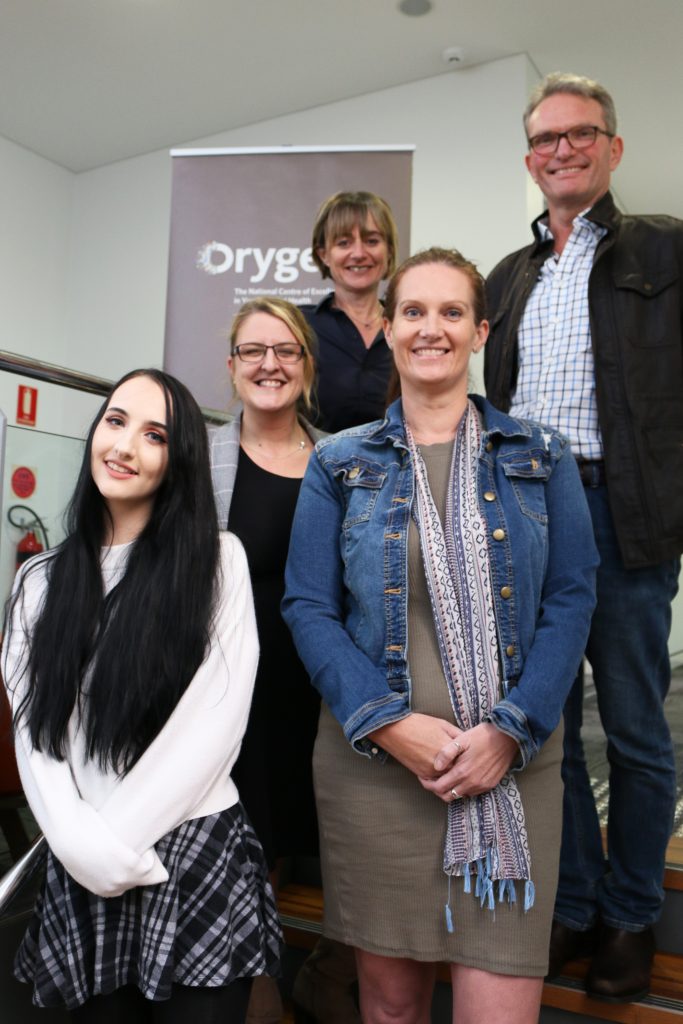As many as 10 percent of young Australians will self-harm at some point in their lives and often parents and carers do not know how to respond.
A new youth mental health resource, Coping with self-harm: A guide for parents and carers, was launched by WA Primary Health Alliance and the Orygen National Centre of Excellence in Youth Mental Health at the Mary Davies Library and Community Centre, Baldivis last night, with an expert panel discussion and a screening of the film, both open to the public. It can be downloaded here.
“Discussions with local parents and mental health service providers highlighted that parents and carers do not know how to respond if their young person is self-harming, with little guidance available,” WA Primary Health Alliance Project Coordinator Suicide Prevention Trial, Chloé Merna said.
“It is important to support the people who are supporting our youth and to provide practical ways to address self-harm.”
The Orygen resource was identified as part of the solution as it provides practical information on supporting a young person who is self-harming, managing their injuries, implementing coping strategies and where to go for help.
It was developed from a guide originally produced by researchers at the Centre for Suicide Research, University of Oxford, England and was adapted for an Australian audience following extensive consultation between Orygen, young people and their parents and carers.

Orygen Head of Suicide Prevention Research, Associate Professor Jo Robinson, led the project team and said the guide ultimately aimed to improve outcomes for young people.
“Parents and carers are a key source of support for young people, so it’s important that they feel empowered and knowledgeable. By supporting parents and carers this guide addresses a real unmet need,” Professor Robinson said.
The guide also offers practical ways that parents and carers can look after themselves and stresses that they should not blame themselves. It outlines the reasons for self-harm and what makes a young person vulnerable to self-harm.
One parent involved in the co-development of the resource noted that when it comes to self-harm: “not only does the child need support and counselling, I think the parent needs support and counselling so that we can understand more of what’s going on and we get strategies to help ourselves, to help our children”.
Nic Juniper, who was 14 when he started self-harming, said the new guide would help parents and carers have respectful and helpful conversations.
“Self-harm is not an easy thing to talk about with the people you love – it hurts quite a lot to feel like you might be hurting them. It was a lot easier for me to talk about my experiences and feelings once some of those initial conversations had been had,” Mr Juniper said.
Juniper said he was now in a “better place” thanks to hard work and family support.
Orygen received University of Oxford permission to adapt the guide for an Australian audience. The adaptation was completed with funding from WA Primary Health Alliance through the PHN Program, Future Generations Global Trust and The William Buckland Foundation.
This initiative is part of the Australian Government’s Peel, Rockingham and Kwinana Suicide Prevention Trial, led by WA Primary Health Alliance and Peel and Rockingham Kwinana Community Response Steering Group.
If you or someone you know needs urgent support, call Lifeline on 13 11 14, Suicide Call Back Service on 1300 659 467 or Kids Helpline (5 to 25 years) on 1800 55 1800.
ENDS
Media Contact
Fiona Clark, Corporate Affairs Advisor, WA Primary Health Alliance
Tel: 0437 563 735 Email: fiona.clark @wapha.org.au
To access a pdf version of this media release, download here
Fact Box
- – Self-harm is any form of intentional self-injury or self-poisoning, irrespective of motive or suicidal intent.
- – Self-harm may be an attempt to cope with, or to regulate, intense emotional or psychological distress.
- – Approximately one in ten Australian young people have self-harmed at some point in their lives. [i]
- – Repeated self-harm is common and almost two thirds of young people who self-harm have done so more than four times. [ii]
- – Self-harm occurs more frequently in females than in males. [iii]
- – Young people who identify as LGBTIQA+ are twice as likely to engage in self-harm, often due to bullying and discrimination. [iv]
For more information on young people and self-harm, see Orygen’s report Looking the other way.
[i] Curtis et al. (2018). Caring for young people who self-harm: A review of perspectives from families and young people. International Journal of Environmental Research and Public Health, 15(5), 950.
[ii] Lawrence D., Johnson S., Hafekost J., Boterhoven de Haan K., Sawyer M., Ainley J., Zubrick S.R. The Mental Health of Children and Adolescents: Report on the Second Australian Child and Adolescent Survey of Mental Health and Wellbeing. Department of Health; Canberra, ACT, Australia: 2015.
[iii] Hawton K., Saunders K.E., O’Connor R.C. Self-harm and suicide in adolescents. Lancet. 2012;379:2373–2382. doi: 10.1016/S0140-6736(12)60322-5.
[iv] King M., Semlyen J., Tai S.S., Killaspy H., Osborn D., Popelyuk D., Nazareth I. A systematic review of mental disorder, suicide, and deliberate self harm in lesbian, gay and bisexual people. BMC Psychiatry. 2008;8:70. doi: 10.1186/1471-244X-8-70.
